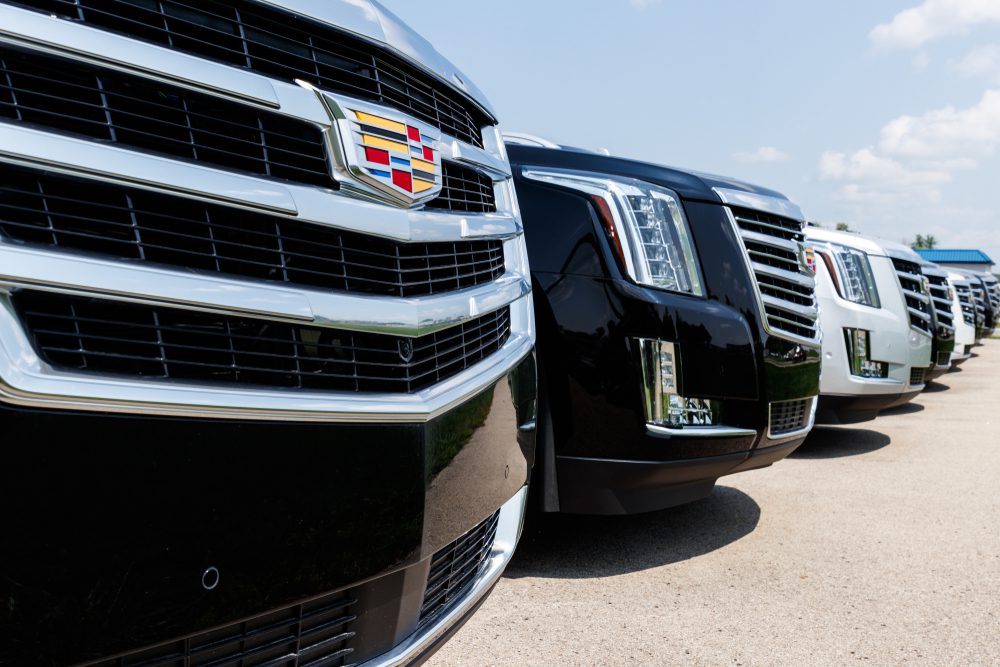December’s high-end vehicle sales are normally higher than the rest of the year, and this past December maintained that trend and even pushed it further. Luxury vehicle sales accounted for 18.4% of the total sales through the month, according to Kelley Blue Book. Strong numbers for the month include above-MSRP pricing for luxury models and incentives that dropped as low as the industry has seen.
 Kayla Reynolds, analyst for Cox Automotive said in the press release, “December typically is the best month for luxury vehicle sales, and 2021 followed that trend in a big way. The result was another record in overall average transaction prices, completely driven in December by the increase in luxury vehicle sales.”
Kayla Reynolds, analyst for Cox Automotive said in the press release, “December typically is the best month for luxury vehicle sales, and 2021 followed that trend in a big way. The result was another record in overall average transaction prices, completely driven in December by the increase in luxury vehicle sales.”
Luxury vehicles accounted for 16.9% of sales in June 2021, a figure that’s climbed from 15.5% in December 2016, five years ago. Another 1.5% jump might not seem like much on paper, but on the full month’s 1.12 million-plus sales, it accounts for around 17,000 additional luxury units hitting the pavement.
Higher Average Transaction Prices
For the luxury segment, average transaction prices have risen to historic levels. December 2021 sales had a median increase in ATP of $64,864 for the month, representing prices more than $1,300 above MSRP. Luxury models have never seen prices averaging this much above MSRP. Cox Automotive data shows that last December, the luxury segment ATP was more than $3,000 below MSRP.
| Related: Why calculating rebates and incentives differently can increase car dealer profitability |
Of course, factors for the ATP increase in luxury vehicle sales is the same across the non-luxury segments as well. Inventory levels are still extremely challenged as the industry tries to replenish its supply of chips. Carmakers have been focusing their manufacturing efforts on the best-selling and highest-grossing models too, which inevitably means that some buyers are purchasing a car with more features than they otherwise would.
For the year, two carmakers led the ATP gains across all models, not just luxury. Tesla reported a 20.2% increase in transaction price from December 2020 and General Motors reported a 20.0% increase over the same period. They were followed closely by Honda, Stellantis, and Hyundai who reported increases of between 15.3% and 17.4%. These prices were markedly skewed toward more expensive models rather than just increased prices with cars losing market share to account for just 22.7% of sales. Through December 2021, the ATP maintained above MSRP, closing out the last month at $900 over the sticker price.
Incentives also hit record lows
What do carmakers do when the demand exceeds supply consistently, month after month? They pull back on incentives. December 2021 marks a historic low for incentives with an industry-wide average of just 3.9%. On the average price for vehicles of $47,077, incentives cut the price by just $1,836. Passenger cars represented the highest rate of incentives at just 4.5%, so a $25,000 car might have a factory discount of around $1,100. Still, that barely makes up for the above-MSRP markup at the dealership level.
January’s inventory levels are consistent with December 2021 with unremarkable increases expected. The stabilized economy keeps consumer buying power strong, so there’s little reason to think that early 2022 will have any real effect on supply and demand.
Did you enjoy this article from Jason Unrau? Read other articles on CBT News here. Please share your thoughts, comments, or questions regarding this topic by submitting a letter to the editor here, or connect with us at newsroom@cbtnews.com.
Be sure to follow us on Facebook and Twitter to stay up to date or catch-up on all of our podcasts on demand.
While you’re here, don’t forget to subscribe to our email newsletter for all the latest auto industry news from CBT News.










